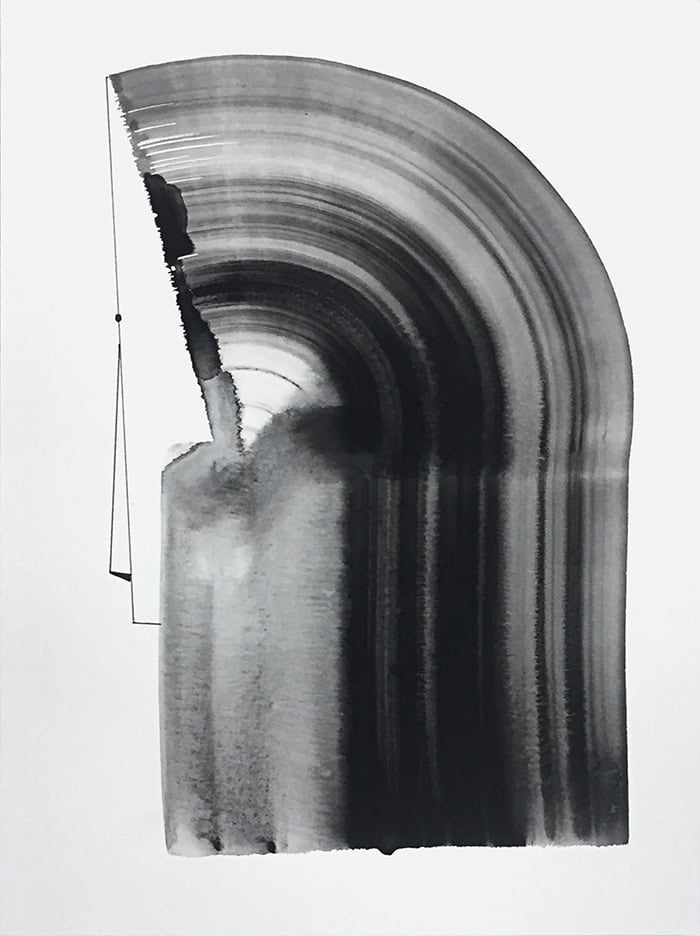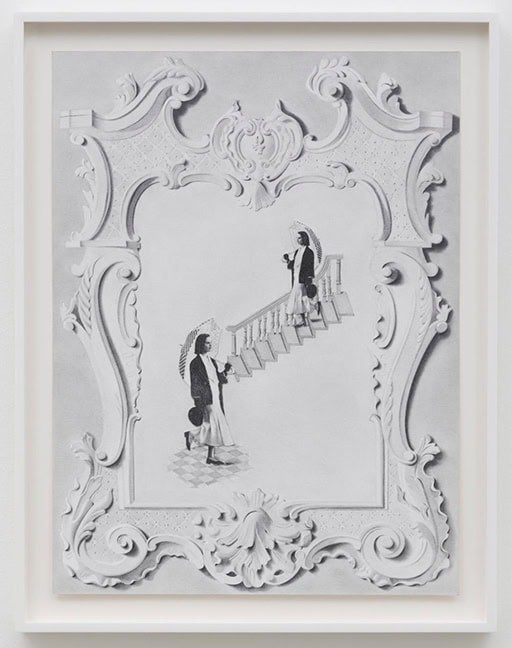
Located in the heart of downtown, Athens’s newest space to view contemporary artwork is actually two distinct galleries, Tif Sigfrids and Howard’s. Though it’s fairly uncommon for more than one gallery to occupy the same physical space, at least in this neck of the woods, the arrangement allows for gallery owners Tif Sigfrids and Ridley Howard, who is also a painter, to pursue compatible yet separate curatorial visions. Both Sigfrids and Howard lived in Athens during the ’90s, and recently returned after pursuing careers in Los Angeles and New York City, respectively. The two hope to promote local talent, while also encouraging exchanges with other communities on a wider scale.
Sigfrids’s first exhibition “Art in the South: Art Rosenbaum and Friends” opened on June 16 and includes 10 portraits by the Athens-based painter selected from the past three decades, alongside artworks by the subjects who appear in his canvases. Demonstrating Rosenbaum’s deeply rooted connections — he taught classes in drawing and painting at UGA’s Lamar Dodd School of Art for 40 years, helping to shape an entire generation of aspiring young artists. The show serves as an introduction to several notable artists who were influential in shaping the cultural landscape of the region.
Sigfrids first met Rosenbaum a year or so ago when he dropped by her gallery, located in Hollywood at the time, in hopes of showing his work. Coincidentally, Sigfrids was already planning her cross-country move. She looked him up as soon as she arrived in Athens and visited his studio, where he told elaborate stories about the personal histories and cultural contributions of his subjects. Sigfrids noticed that artworks by many of those artists were also displayed around the home he shares with his wife Margo Newmark Rosenbaum, which inspired her to include them in the exhibition as well.
“It did feel like there was an inherent connection to storytelling or weaving together one version of history through the lens of someone’s artistic output,” says the dealer.
“Art in the South” touches on his dedication to teaching through works by fellow professors Jim Herbert, Richard Olsen and Bill Paul, as well as former students Ridley Howard and Samuel Stabler.
“I think Art has played an incredible role in elevating art in the South,” says Sigfrids. “Take for instance Howard Finster, who Art invited to the University of Georgia to give a talk and performance about his work. It’s very possible that if he hadn’t invited Finster, REM wouldn’t have met him — and obviously they really helped to make his work known internationally — but I’m pretty sure Art was the first connection.”
As a performer, folklorist and devout lover of traditional American folk music, Rosenbaum has traveled extensively throughout Georgia to capture the raw energy of fiddlers, banjo pickers and ballad singers. He has released over a dozen albums of documentary recordings, including Howard Finster’s Man of Many Voices and Folk Visions and Voices, the latter of which includes songs by Joe Rakestraw, father of Charlie Rakestraw, a self-taught artist whose work appears in the exhibition. “Art in the South” also includes a piece by self-taught painter Bonnie Loggins, whom Rosenbaum got to know through recording over the course of a decade. A portrait of Dilmus Hall, whose work is tied to the tradition of African American yard art, reminds viewers of the rarity and importance of a distinct sense of place.
“Art is this incredibly convivial guy, and is deeply interested in what other people are doing,” says Sigfrids. “This is most obvious through his field-recording work. His quest for folk musicians alone has brought so many people into his orbit, not to mention the hundreds of students he had over the years. Walking around town with him is like being with a mayor. Everyone seems to know him.”

The work in Howard’s inaugural show stand in stark contrast to the vibrant palette and wild brushstrokes of Rosenbaum’s large-scale paintings, demonstrates how fluidly the concept of presenting concurrent shows can be executed. Unassuming black-and-white works on paper by Milano Chow and Torkwase Dyson, on view in the middle room, create a noticeable shift in mood between the two halves of “Art in the South.” “I knew that Art’s show would have a certain visual energy and volume, so I wanted to focus on a modesty of scale and do something that was a bit quiet and a different kind of contemplative space,” says Howard.
Both Chow and Dyson use drawing as a medium to build new architectural structures housing ambiguous narratives. Chow, a Los Angeles-based artist, arranges fragments of rooms — staircases, checkerboard floors, doorways — into sparse, collagelike interiors. Two of her graphite drawings depict sharply dressed women reflected in ornately detailed mirrors, adding a layer of voyeurism. Dyson, who recently moved to Jersey City from Brooklyn, uses geometric abstraction to deconstruct natural and built environments. Though appearing as simple washes of gouache and ink, her work is influenced by themes of urban development, Southern landscape and black spatial justice.

“Truthfully, I just love both Torkwase and Milano’s work,” says Howard. “There is something about the way that they approach drawing with such simplicity, but unlock bigger ideas about themselves and where they fit into the world. Maybe it’s about identity, or subjectivity, or self-reflection, but it is all embedded in a play with drawing. They both also think about architecture in subtle ways, creating some unexpected conceptual and formal connections in the show.”
The current exhibitions at Tif Sigrids and Howard’s will remain on view through August 11. Located at 119 North Jackson Street, the galleries are open every Friday and Saturday from 11am to 5pm or by appointment during the summer. Next season, Howard’s will host works by Eleanor Ray and Yanique Norman, and Sigfrids will bring in works by Charles Harlan and Andy Giannakakis.




